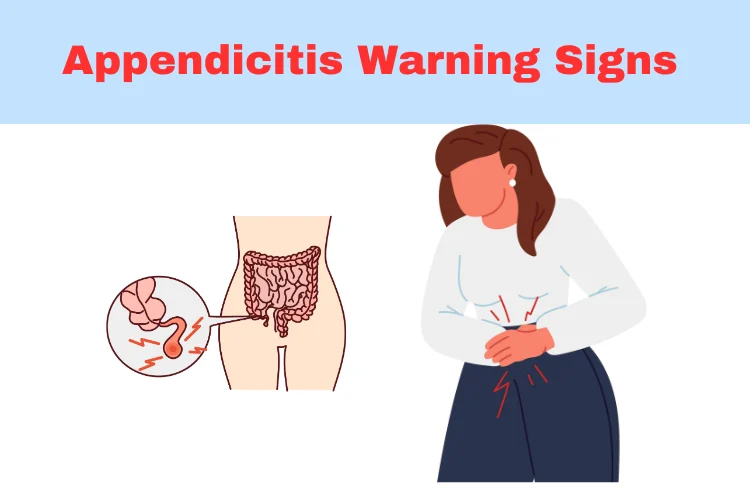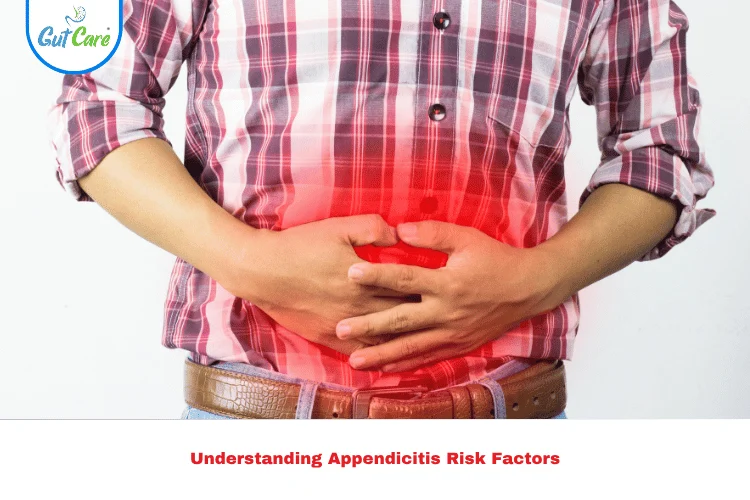That stomach pain may not be just gas—what if it’s appendicitis?
Everyone gets a stomach ache now and then, but some pains shouldn’t be brushed off. One of the early signs of appendicitis is a persistent ache in your lower right abdomen. If untreated, it could lead to a burst appendix, which is a serious medical emergency. The good news? Recognizing the symptoms early can help you avoid complications and get treated in time.
What is Appendicitis and Why is it Serious?
The inflammation of the appendix, a tiny pouch attached to the large intestine, is known as appendicitis. While its purpose isn’t fully understood, one thing is clear—when it becomes inflamed, it can turn life-threatening.
An inflamed appendix can rupture and cause infection to spread in your abdominal cavity (a condition called peritonitis). This is why spotting the early signs of appendicitis can be life-saving.
Early Signs of Appendicitis: Listen to Your Body
1. Pain Around the Belly Button Shifting to Lower Right Side
The commonest symptom of appendicitis is a pain that begins around the belly button region and migrates toward the lower right abdomen. Over time, this pain becomes sharper and causes greater discomfort when engaging in movement, inhaling deeply, or coughing.
2. Nausea or Vomiting
Nausea or vomiting is another common presenting feature of appendicitis either alone or after the occurrence of pain.
3. Decreased Appetite or Disinterest in Food
Early symptoms that should not be neglected include an appetite loss and fullness quickly after eating.
4. Low-Grade Fever
Low-grade fever can be a result of inflammation occurring inside the body.
5. Abdominal Distension and/or Gas Trouble
You may feel a little gas or distension, especially in the early stages.
Appendicitis in Adults vs Children
Adult appendicitis typically manifests as the classic symptoms of nausea and right-sided abdominal pain. However, it can be more difficult to identify early signs of appendicitis in children because they might not adequately describe pain and instead exhibit symptoms like irritability or diarrhea.
See a doctor right away if your child has a persistent stomach ache, especially if they are also experiencing fever or vomiting.
Learn more about appendicitis in adults vs children here.
Appendicitis Diagnosis: What to Expect
Physicians use more than one test. Appendicitis diagnosis entails:
Physical examination: Applying pressure to the abdomen to feel for pain.
Blood tests: To look for infections.
Urine tests: To rule out problems with the urinary tract.
CT or ultrasound scans: To see the swollen appendix.
It is essential to diagnose early signs of appendicitis in order to avoid complications like rupture or the development of an abscess.
Appendicitis Treatment: Is Surgery Always Needed?
The severity determines the course of treatment. Antibiotics may be used to treat mild cases, but surgery is typically advised.
When Is Surgery Required for Appendicitis?
- If there is an obvious risk of rupture or inflammation.
- If symptoms are not alleviated by antibiotics.
- In the majority of moderate to severe situations.
Laparoscopic appendectomy is a common procedure used by doctors because it is less invasive and shortens the recovery period from appendicitis.
What Happens After Surgery?
Most of the time, the recovery period is between one to three weeks, depending on how healthy you are and the actual surgery.
Recover from Appendicitis Tips on Recovery Time:
- Avoid any stressful physical activity for the next few weeks.
- Eat a balanced diet and drink plenty of water.
- Watch any signs of infection around the incision area.
Appendicitis Complications to Be Aware Of
Untreated appendicitis can result in:
-Appendix rupture
-Abscesses (infections filled with pus)
-Peritonitis (abdominal infection)
-Sepsis, a potentially fatal blood infection
These risks can be avoided by identifying the early symptoms of appendicitis.
Appendicitis Risk Factors: Who’s More Likely to Get It?
While anyone can get appendicitis, the risk increases if you:
- Are aged between 10 and 30
- Have a family history of appendicitis
- Eat a low-fiber, high-fat diet
- Have gastrointestinal infections
Being aware of these appendicitis risk factors can help you act fast if symptoms occur.
Conclusion
Appendicitis doesn’t always start with sharp pain, it often begins subtly. Paying attention to the early signs of appendicitis can help you avoid serious complications and make a quick recovery. Whether you’re an adult or a parent caring for a child, knowing when to seek medical help is crucial.
Think it’s appendicitis? Don’t wait—get checked and stay safe today!
FAQ
1. What are the early signs of appendicitis?
Typically, it indicates the onset of some form of stomach ache at the vicinity of the naval, nausea, and hunger loss.
2. How is Appendicitis diagnosed?
Physical examinations, blood tests, and imaging such as ultrasounds or CT scans complete the diagnosis of appendicitis.
3. Where is the typical pain in appendicitis?
Most often, the pain shifts from near the area of the belly button to the lower right side of the abdomen.
4. What is the best treatment for appendicitis?
The majority of appendicitis cases are treated with an operation, although in certain cases early onset, sometimes antibiotics can be beneficial.
5. Can appendicitis symptoms be different for children?
Yes, appendicitis symptoms in children typically include vomiting, irritability, or diarrhea, making diagnosis more difficult.
6. How long is the recovery period after appendicitis surgery?
Appendicitis healing time may take 1 to 3 weeks depending on surgical repair or health condition.




